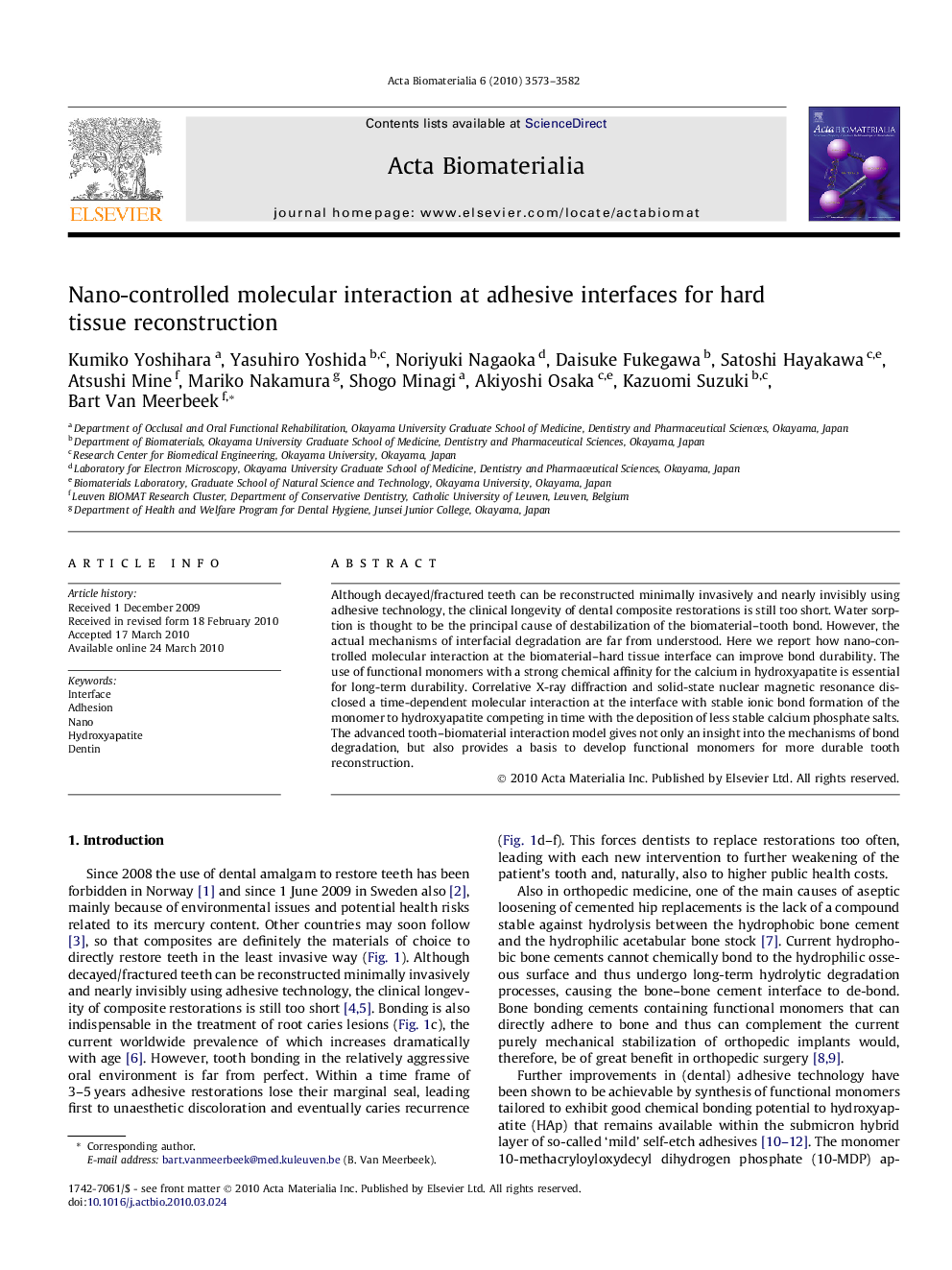| Article ID | Journal | Published Year | Pages | File Type |
|---|---|---|---|---|
| 2152 | Acta Biomaterialia | 2010 | 10 Pages |
Although decayed/fractured teeth can be reconstructed minimally invasively and nearly invisibly using adhesive technology, the clinical longevity of dental composite restorations is still too short. Water sorption is thought to be the principal cause of destabilization of the biomaterial–tooth bond. However, the actual mechanisms of interfacial degradation are far from understood. Here we report how nano-controlled molecular interaction at the biomaterial–hard tissue interface can improve bond durability. The use of functional monomers with a strong chemical affinity for the calcium in hydroxyapatite is essential for long-term durability. Correlative X-ray diffraction and solid-state nuclear magnetic resonance disclosed a time-dependent molecular interaction at the interface with stable ionic bond formation of the monomer to hydroxyapatite competing in time with the deposition of less stable calcium phosphate salts. The advanced tooth–biomaterial interaction model gives not only an insight into the mechanisms of bond degradation, but also provides a basis to develop functional monomers for more durable tooth reconstruction.
